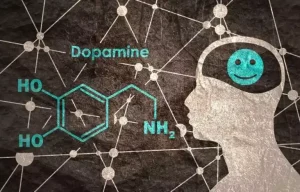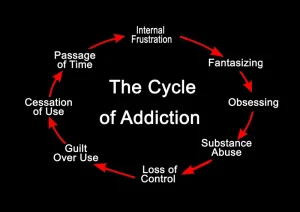
(Click on the star on form card to select)

Former NFL quarterback Brady Quinn suggested on a CBS podcast in 2015 that for a player making $1 million per game, the risk of a four-game suspension for PEDs didn’t compare to the potential rewards that could come with them, such as a bigger payoff later. The new collective bargaining agreement in 2020 reduced suspensions for first-time offenses from four games to two while also reducing suspensions for second offenses from 10 games to five. At the same time, the two sides also agreed to increase the penalties for anabolic agents or steroids – lengthening those suspensions from four to six games for a first offense and 10 games to 17 games for a second offense.

Public health approaches to PED use, including needle and syringe exchange programs and other harm reducing measures, have had wide uptake among people who use steroids in the UK (McVeigh & Begley, 2017). These models each offer benefits to athlete health, though they leave open many issues of implementation within the wider sport environment that has been saturated with anti-doping narratives of drug-free sport and zero tolerance for doping. Doping and the use of performance enhancing drugs (PEDs) are often considered and discussed as a separate issue from other types of substance use, by sporting bodies, politicians, the media, and athletes who use PEDs themselves (Evans-Brown, 2012). There is a more or less clear separation in both public discourse and research on doping between the (elite) sport context and the use of PEDs in society, often connected to the gym and fitness enterprise.
With the ever-mounting pressures faced by athletes, it is not surprising that drug abuse by athletes exists across essentially all sports and age groups. Elite athletes competing at international and national levels are subject to standardized anti-doping guidelines under the auspices of WADA and related national organizations. WADA is the international independent agency that publishes the World Anti-Doping Code, which is the document harmonizing anti-doping policies in all sports and all countries.61 The Code was first adopted in 2003 and became effective in 2004. The most commonly used substances are androgenic agents such as anabolic steroids.

However, the physical and social risks of doping are multiplied when individuals must secure their own supply, determine their own doses, minimise side effects, and prevent being caught through in or out of competition testing. One way of avoiding some of these issues is for athletes to collectively dope, thereby sharing the burden of risks and working together to minimize them. Systematic doping involves centrally organising doping for a group of athletes. This is often done by an entity above the individual, such as by a team or a state, which often stands to benefit from the cumulative boost in performance among its member athletes. In both cases, the supply and use are centrally managed in order to manage the risks of substance use for individuals who would be otherwise incapable of doing this effectively on their own. Though systematic doping is often done for collective performance enhancement, related concerns include avoiding detection and ensuring athletes remain healthy enough to compete.


Instead, Russian athletes will compete representing the Russian Olympic Committee. Players who come forward with their drug problems receive league-funded counseling from the Life Extension Institute, a 24-hour counseling center funded jointly by the NBA and the NBPA. In the NFL, a first violation leads to a minimum four-game suspension, while a third violation calls for a minimum 12-month suspension as well as disqualification from the Pro Bowl and other honors drug use in sports for the year. Under the terms of the licence agreement, an individual user may print out a single article for personal use (for details see Privacy Policy and Legal Notice). On 22 October 2012 Lance Armstrong was officially stripped of his Tour de France titles since 1 August 1998.[187] As a response to the decisions of the USADA and UCI, Armstrong resigned from the Lance Armstrong Foundation.[188] He later admitted to doping in an interview with Oprah Winfrey.
As little as one brief intervention session with athletes demonstrated decreased alcohol use, frequency and alcohol related consequences three months later [40]. Another study demonstrated that online personalized drinking feedback (PDF) coupled with athlete specific information led to a lower peak blood alcohol concentration (BAC) at 6-month follow-up along with in-season athletes reporting less drinks per week than those in the control group [41]. Other online programs have found that providing web-based feedback or online modules in college athletes could lead to significant reductions in drinking, as well as improvement in assessment of social norms related to drinking [42,43]. Alcoholics anonymous (AA) and Narcotics anonymous (NA) meetings along with finding a sponsor are effective methods as well with no data in the athletic world at this time. One model has called for a partial change to anti-doping by relaxing current rules to allow for harm reduction to be introduced. This model goes beyond the others to include several levels of ethical concern (self, other, play, display, humanity) and acknowledges the complex reality of implementing changes to the existing system.
Many athletes therefore find themselves in situations regarding drug use that seem arbitrary, and at times hypocritical, in terms of the substances they can ingest. For example, they may be suspended for using a substance legal in several countries and states in the United States (cannabis), but they are allowed to use narcotic painkillers in an effort to facilitate their return to the practice or competitive arena. Though there is a range of motivations for engaging in doping (Henning & Dimeo, 2014), a primary one at the elite level is winning. For elite and professional athletes, the monetary incentives to win can be huge and provide a reason for athletes to use prohibited substances (Aubel & Ohl, 2014; Fincoeur, Cunningham & Ohl, 2018).

A focus on education and helping these athletes see their potential without drugs in sports is vital to keeping them clean. It is also essential to establish a moral framework that helps the athlete see that doping isn’t the right choice, even if others are doing it. When athletes on drugs are looking for information on substance abuse treatment, confidentiality tends to be one of their biggest considerations. The danger here is that an athlete may not want to wait several weeks, or even months, to get back to their sport. Instead, they may continue using the opioids so they can handle the pain they’d otherwise be facing during games.
WADA revises and publishes its list of banned substances approximately annually. There are five classes of banned drugs, the most common of which are stimulants and hormones. There are health risks involved in taking them and they are banned by sports’ governing bodies. These drugs might lower the damage that happens to muscles during a hard workout.
Anabolic steroids are usually taken either in tablet form or injected into muscles. In December last year, a German TV documentary alleged as many as 99% of Russian athletes were guilty of doping, although the Russian Athletics Federation described the allegations as “lies”. Side https://ecosoberhouse.com/ effects of creatine can include gaining weight and cramps in the belly or muscles. The body turns andro into the hormone testosterone and a form of the hormone estrogen. Enter your information to learn about our advertising options and get in contact with our development team.
Copyright © 2024 · All Rights Reserved · D2MG
Music Lite by Organic Themes
